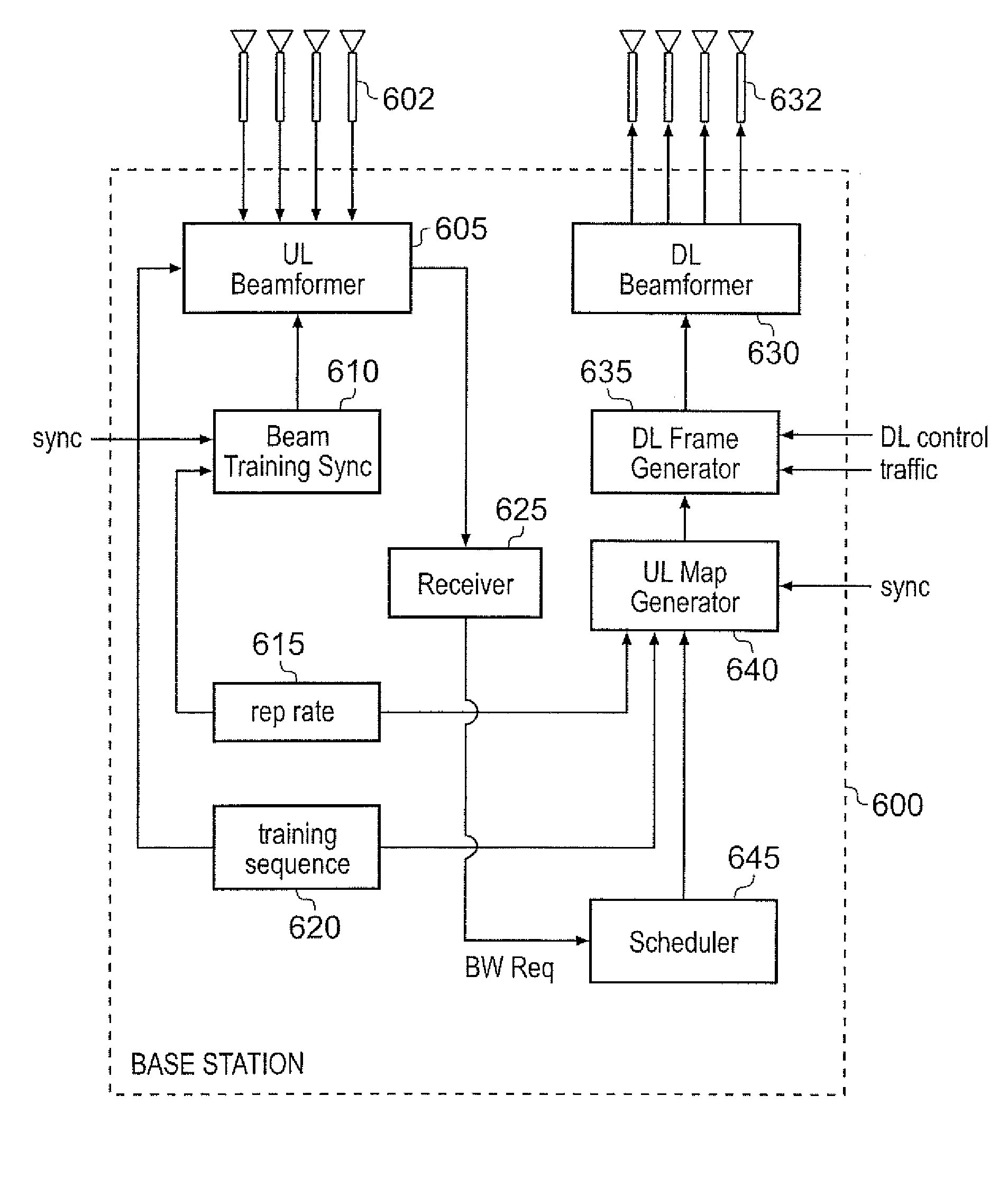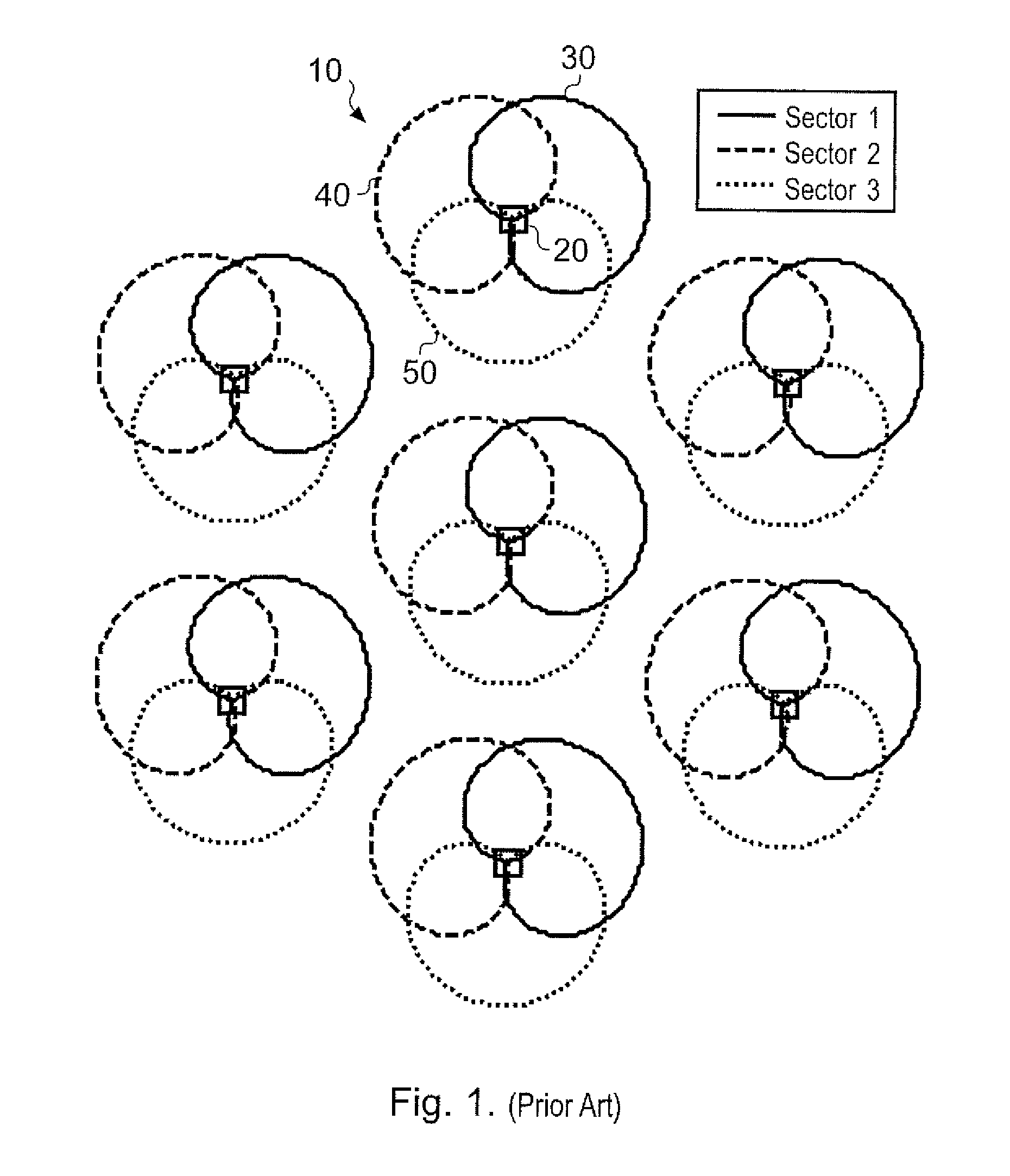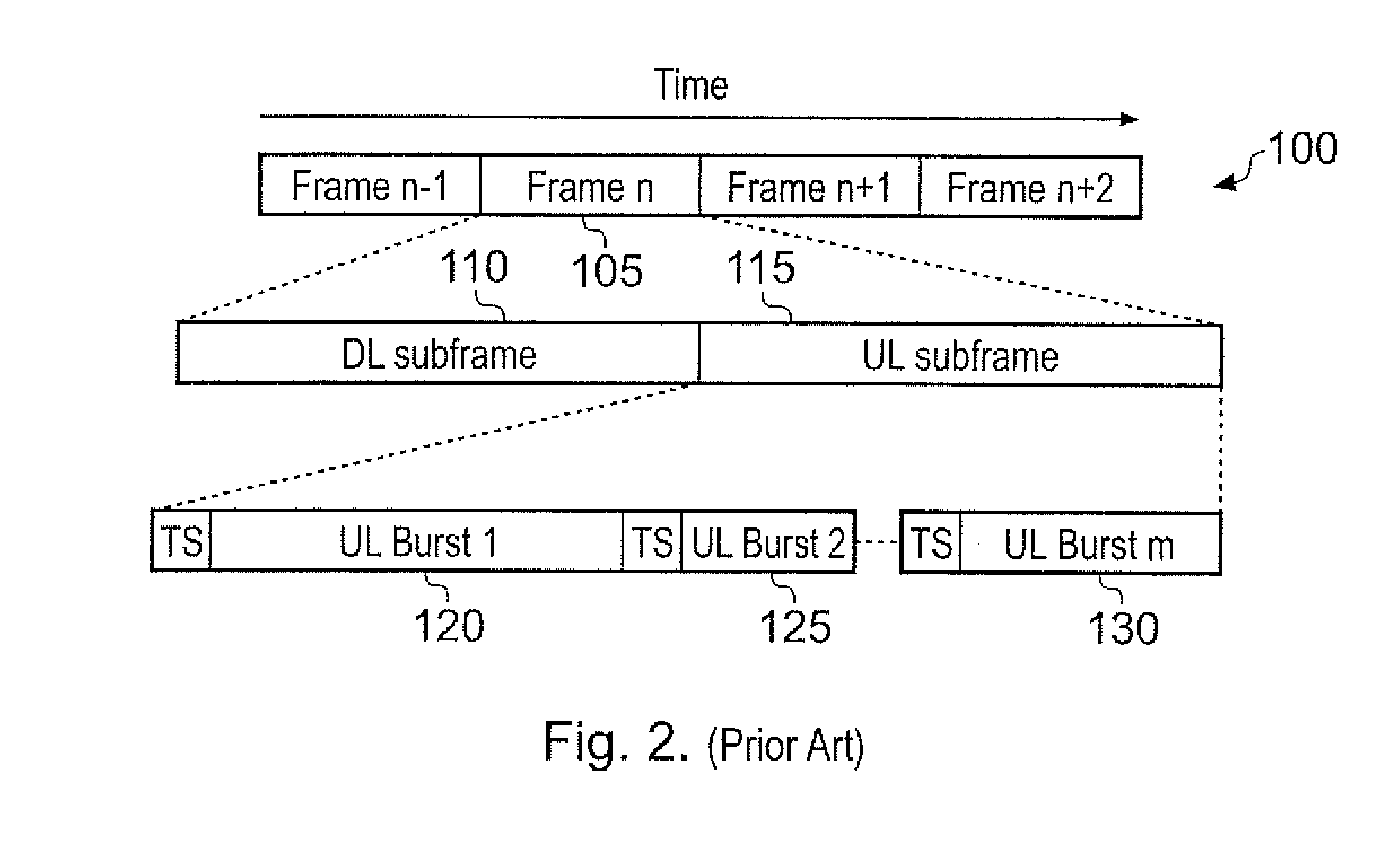Point to multipoint device for communication with a plurality of telecommunications units
a multi-point device and communication technology, applied in multiplex communication, wireless communication, wireless commuication services, etc., can solve the problems of reducing the overall system throughput, reducing the number of resources (i.e. channels), and degrading so as to improve the quality of received signals
- Summary
- Abstract
- Description
- Claims
- Application Information
AI Technical Summary
Benefits of technology
Problems solved by technology
Method used
Image
Examples
Embodiment Construction
[0053] The techniques of embodiments of the present invention can be applied to a variety of different point to multipoint devices that employ steered beam, or fully adaptive, antenna arrays to produce a reception beam for receiving communications from a plurality of telecommunications units. For the purpose of describing an embodiment of the present invention, a base station is considered as an example of such a point to multipoint device, with the base station (BS) being provided within a cell of a wireless network for communicating with a plurality of subscriber stations (SSs) provided within that cell. Each cell may be divided into multiple sectors, such as for example discussed earlier with reference to FIG. 1, and in such instances each BS will be arranged to use one or more antenna arrays to generate reception beams for each of the sectors. Whilst in such embodiments the point to multipoint device may be considered to be the entire base station, it can alternatively be formed...
PUM
 Login to View More
Login to View More Abstract
Description
Claims
Application Information
 Login to View More
Login to View More - R&D
- Intellectual Property
- Life Sciences
- Materials
- Tech Scout
- Unparalleled Data Quality
- Higher Quality Content
- 60% Fewer Hallucinations
Browse by: Latest US Patents, China's latest patents, Technical Efficacy Thesaurus, Application Domain, Technology Topic, Popular Technical Reports.
© 2025 PatSnap. All rights reserved.Legal|Privacy policy|Modern Slavery Act Transparency Statement|Sitemap|About US| Contact US: help@patsnap.com



